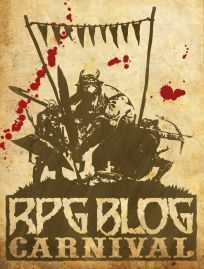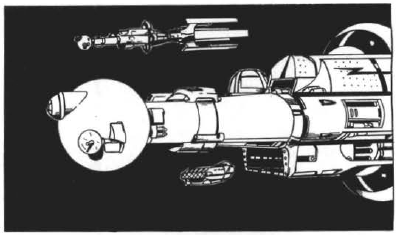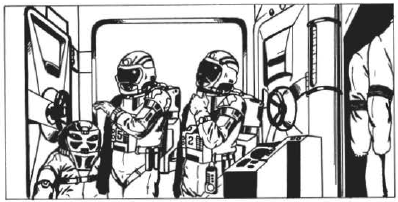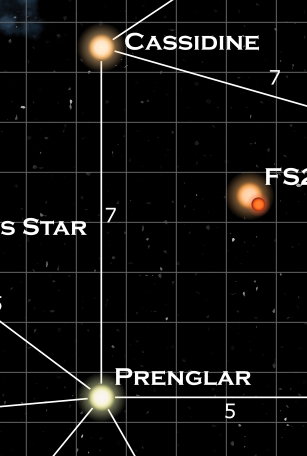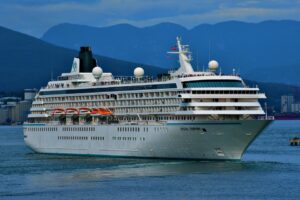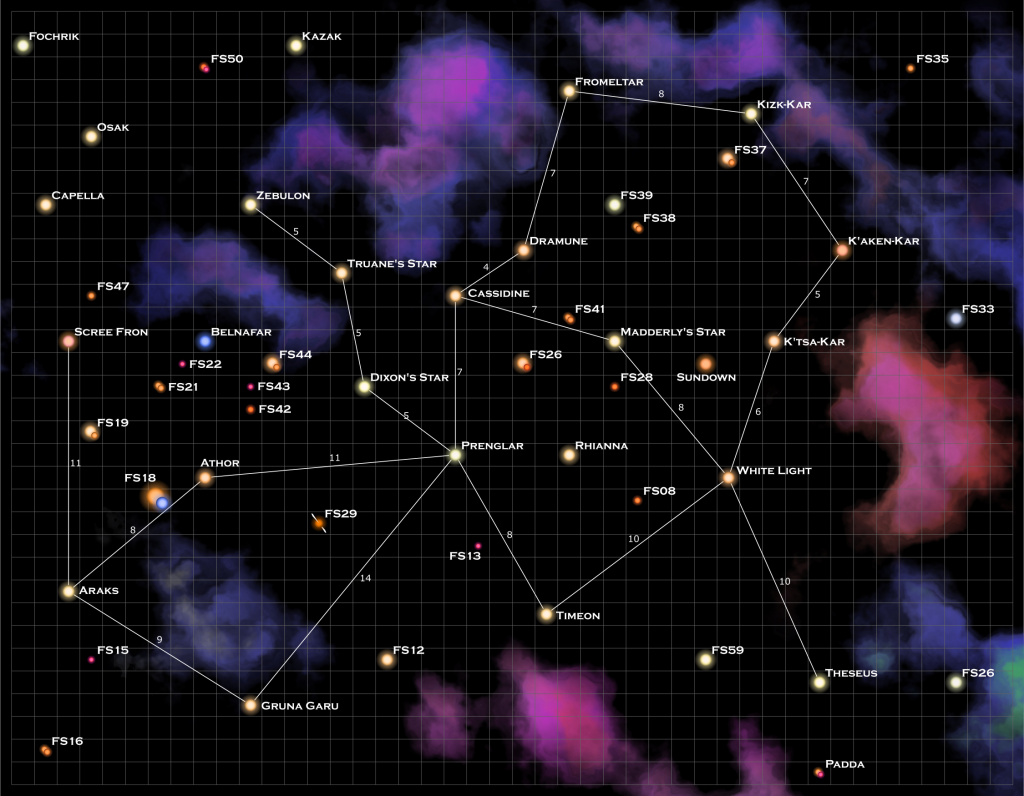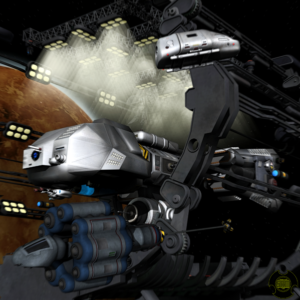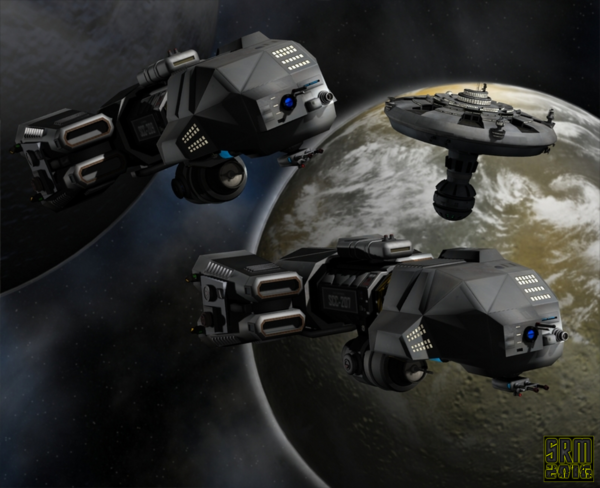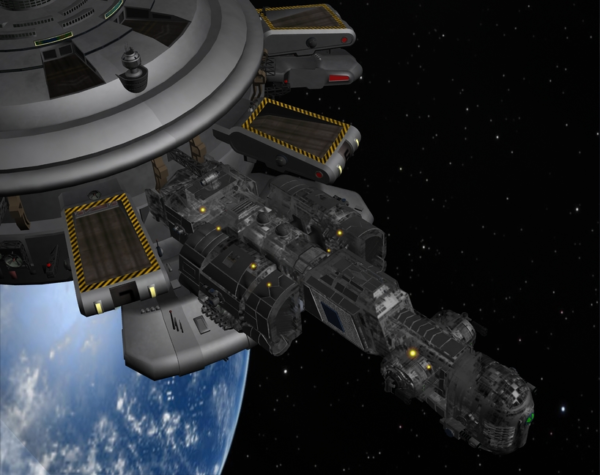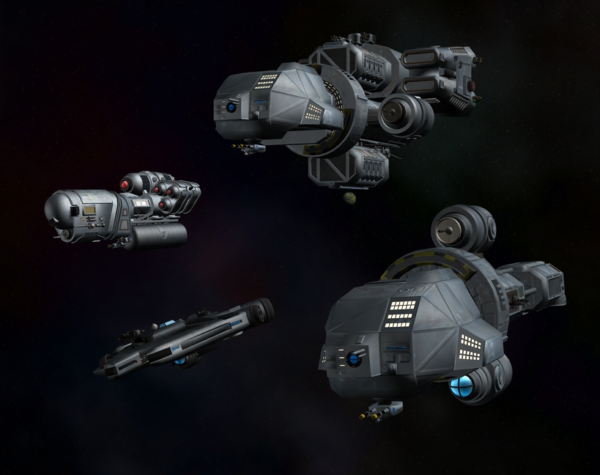Welcome to June! Regular readers my have noticed that this post is a day early as I usually post on Tuesdays. That’s because this month, I’m hosting the RPG Blog Carnival and we need to get this month’s topic, Organizations, kicked off. This post will replace tomorrow’s regular post as the first post of the month. But don’t worry, the next installment of the Detailed Frontier Timeline will be up next week.
If you’re new to the Expanding Frontier, welcome. After you’ve read today’s post, maybe you’ll stick around and take a stroll through the archive and hopefully find something else of interest as well.
The Topic – Organizations
When I volunteered to host a month of the blog carnival, I had already had in my mind to do some development of new and existing organizations in my game. I had already done a few posts on the topic and thought it would be a great topic to get input from other creator on how they handle different organizations in their settings. Plus it would give me the motivation to flesh out a few more of my own.
I’m using the term “organization” here very loosely. It could be anything from a megacorp, like I detailed in my post about the Streel Corporation, a small private company (e.g. Obar Enterprises), a religion, a governing body of a planet or city, or a band of adventurers. It could be a single business, a sports team, or a knitting club. Guilds, cults, and secret societies are other examples. Anything that has two or more people involved and some sort of order or hierarchy counts. The sky is really the limit.
Maybe like me, you want to flesh out one or more organizations in your setting an share them as part of the carnival. What makes the organization unique? How does it stand out in your world? How do the player characters interact with the organization, if at all?
I remember a business from a fantasy game I played in when I was in high school. It had been created by a retired character in an earlier campaign run by the GM, he wasn’t part of our game. It was a chain of establishments that were a combination of high-end tavern, inn, casino, and other attractions. You could find them in almost every major city. But they only accepted silver coins. You could not pay in gold, copper, nickel, or brass (the various other coins of the world). Only silver. Apparently, the retired PC who set up the original inn, which he created as a safe house, had something happen to him that made him leery of every other coin type. It was a great, safe place to stay, you just had to have a lot of silver on hand to pay your bills.
Or maybe you have a unique set of rules for handling the way various organizations interact with one another. I remember when I read Stars Without Number, the faction rules were so interesting I almost wrote a little mini game based just around that set of rules.
Another topic that comes to mind is how you keep track of all the organizations in your game and what they are up to. Do you have lists of all the projects they are working on? Or maybe you just have short descriptions of their aims and goals and when something happens, you attribute it to the organization most likely to have done it.
Those are just some ideas I’ve had of things to write about as I’ve contemplated this topic the last little while. I’m sure you’ll have others. Share your ideas by linking to this post in yours, and posting a comment here once your post is up. At the end of the month, I’ll gather up all the posts from the comments and consolidate them in to an organized list to provide a handy reference.
And with the kickoff out of the way, it’s time to turn our attention to a semi-secret society in my game universe, the True Yazira Society.
The True Yazira Society

I teased this organization back in my posts for the February Blog Carnival, whose topic was Legends and Lore. As part of that month’s posts, I did two posts on the legends and lore of the yazirian species in my Star Frontiers game universe. The first, Yazirian History, I covered the background of how the yazirian race came to be in the Frontier. Most of this is general knowledge to yazirian characters. In the second, Legends & Lore – Yazirians, I covered more less known information including things the characters may not know. It was in this post that I introduced the True Yaziria society.
Creation
The True Yazira society was formed about ten years before the first sathar attack. It was created by surviving members of the old Warhon’s guard, supporters, and retinue.
When news reached the yazirian colonies that the only ship to be lost in the exodus was the one carrying the royal family, many believed that foul play by the Family of One was involved and that they didn’t want to give up control of yazirian society on the new worlds. This was most strongly vocalized by members of the royal court and the Warhon’s personal guard that were already in the Frontier.
It was at this point that the “accidents” and disappearances started happening. Many of the most vocal dissidents died or simply vanished. Fearing for their lives, many of the royal court and royal guard took the opportunity to emigrate to the Prenglar, Cassidine, and Truane’s Star systems were there were multi-species worlds and where they would be out of the direct influence of the Family of One.
As part of this second exodus, these yazirians formed the True Yazira society. The members initially consisted of those fleeing the yazirian worlds but that would change over time.
Aims and Goals
The initial aims of the society were really just mutual protection and support. Coupled with a desire to preserve as many of the traditions of their homeworld as they could in their new environment. First and foremost in the beginning, the members of the society worked to keep track of each other in order to keep them safe from the Family of One and alert one another if someone went missing. The other major aim was to support one another as they settled in these new worlds among aliens species. Contact with the humans, vrusk, and dralasites had started only a few years before and the society provided a social outlet for yazirians to meet and just be themselves.
As word reached the members of the actions being taken by the Family of one on Hentz, as well as the other yazirian colony worlds, the True Yaziria society’s goals expanding to opposing the actions of the Family of One. Many members returned to the yazirian worlds, either permanently, or as regular business visitors, to both monitor and actively work against what they felt were encroachments by the Family of One on the true yarziran way of life. These early efforts were quite fruitful, and the society was gaining momentum, most rapidly on the worlds other than Hentz where the Family of One was centered.
And then the sathar attacked. While the actual devastation was confined to the Truane’s Star system, the repercussions would be felt all over the Frontier. Most of the membership of the society living on Pale were killed in the sathar attack, as whole cities and towns were obliterated in single strikes from space. In the decade after the attack, when everyone thought a fresh attack could occur at any moment, the focus of the entire Frontier shifted and the concerns of the True Yazira society were far from the concerns of the average yazirian citizen. The Family of One worked efficiently and effectively during the crisis and people just came to accept their leadership.
In the intervening decades the aims of the society have shifted somewhat. They still oppose the Family of One, but their efforts are much more behind the scenes. Openly, they focus on cultural preservation and teaching about traditional yazirian values from their homeworld. But behind the scenes, many members still work to limit the power of the Family of One and to get equal treatment for yazirians everywhere regardless of world or clan. These efforts have been much more effective on the worlds other than Hentz. They have given up on completely ousting the Family of One from its position in yazirian society but rather now focus on neutralizing its influence as much as possible.
Membership and Organization
Initially, members of the True Yazira society were all members of the royal court or royal guard and refugees from the yazirian colony worlds living on the mixed-species worlds or the worlds of other species. With the return of some of these yazirians to the colony worlds, the society began to grow there as well. Anyone who expressed displeasure with the operations and ideals of the Family of One would often find their way to True Yazira. On the non-yazirian worlds, many joined simply for the comradarie of fellow yazirians in their new alien homes.
Today most of the membership of the society is fairly old and consists of first generation colonists who still remember Yazira itself. While there are new recruits of the younger generations, their numbers are relatively few but growing. Some of these younger members are truly interested in preserving and sometimes restoring practices from Yazira, most are there for the opposition of the Family of One and its policies and practices. The old world doesn’t mean as much to this younger generation as they have never seen it.
The society is organized in to chapters and councils. The chapters are the local organizing body and typically cover a single town or small region. Although in the larger metropolitan areas such as Port Loren, or Point True, there might be multiple chapters each covering a part of the city.
Councils are the higher level organizations. Each world has a single council that coordinates activities across all the chapters of the world. Each chapter has a representative that attends council meetings and votes for the interests of the chapter. This representative also has the responsibility to make sure that the chapter members adhere to any decisions of the council. Typically, the council representative is the head of the local chapter.
There is also a Frontier wide council consisting of two representatives from each of the world councils. This is the governing body of the society. All current members of this council are former members of the royal guard or royal court.
Activities
In the early days of the society, the members openly opposed the actions of the Family of One although they did so as individuals or groups and never in the name of the True Yazira society. And in return, the Family of One actively hunted down these members of the society, although that was done clandestinely as much as possible.
Openly, and in the name of the society, the early members organized activities and cultural events for yazirians on all the worlds of the Frontier where chapters were organized. They also welcomed any visitors of the other species in the Frontier to the events as a way of teaching them about yazirian culture.
After the sathar attack, the opposition to the Family of One became much more clandestine and behind the scenes. They supported organizations that opposed the practices of the Family of One with money and manpower but took much more of a supporting role than active involvement. They have worked extensively, especially on the worlds in the Athor, Gruna Garu, and Scree Fron systems, to get equal treatment from GODCo on those worlds and limit the control the Family of One exerts on the govenments of those systems.
At the same time, the society has actively stepped up the cultural and historical activities on worlds all around the Frontier, working hard to preserve the cultural heritage of the species and the histories of their homeworld. In the last decade they have launched a major effort to interview and record all surviving members of the species who actually lived on Yazira and participated in the Great Exodus. All of these stories are available for anyone to listen to.
As the society is slowly recruiting younger members, many dissatisfied with the actions and policies of the Family of One, the opposition is becoming more vocal and open once again.
Once recent activity which the society is indirectly a major supporter of, is the voyage of the HSS History’s Hope, a small exploration craft currently trying to chart a way back to the system that they believe to be Yazria. The Family of One suppressed the location of Yaziria shortly after the yazirans arrived in the Frontier claiming a computer crash wiped all details of the location and routes there. With the recent discovery of a system that might by Yazira in the right direction from the Frontier, many members of the society were quite excited. The support for the mission was quite spontaneous and not an organized event. However, most of the crew of the ship are members of the society and much of the mission’s funding comes from members as well. While unintended, this means that the mission has the ability to call on the society for assistance if needed. You can expect to hear more about this relationship in an upcoming post and in upcoming events in the Detailed Frontier Timeline.
Closing Thoughts
That’s my first organization for this month’s carnival. I intend to do at least one more later in the month and have new organizations be a regular feature on the blog. I created the True Yazira organization as part of the Legends and Lore blog carnival entry and have since tied it in to several events in my setting. It hasn’t come up with any games I’ve ever run but that is sure to change in the future.
I can’t wait to see what other organizations my fellow bloggers come up with and other aspects of using organizations in games they discuss. Be sure to check back regularly to see what new posts have been added to the comments and come back at the end of the month for the wrap up and summary post.
What do you think of the True Yazira society? How would you use an organization like this in your game? What more would you like to know about this society? Feel free to share your ideas in the comment section.
